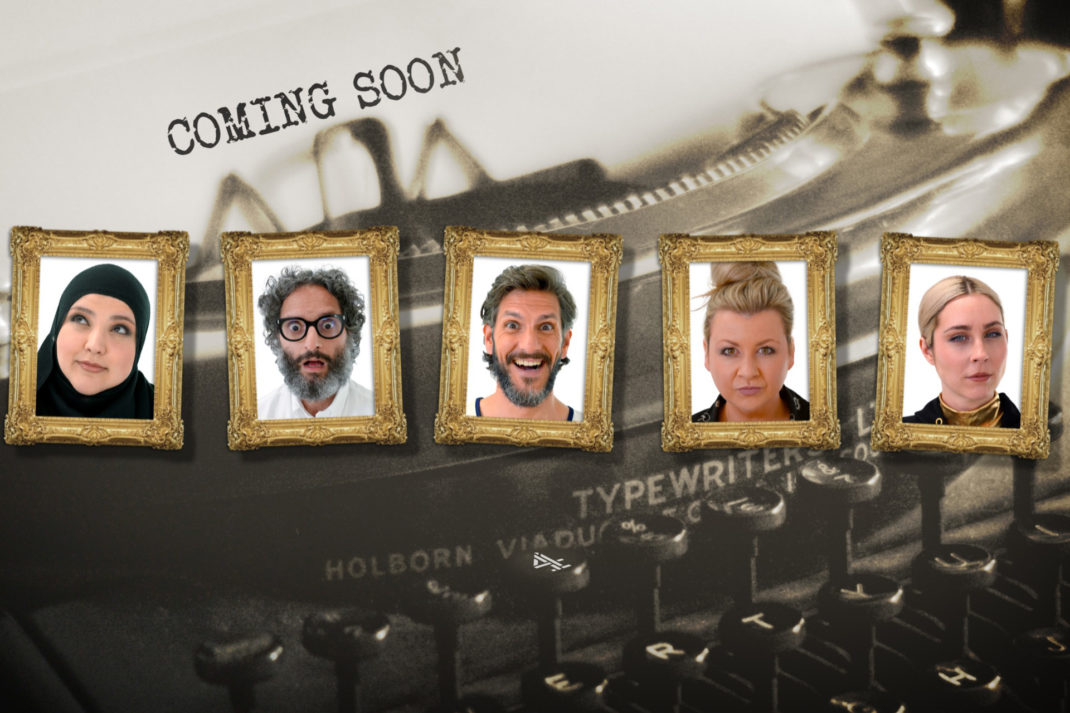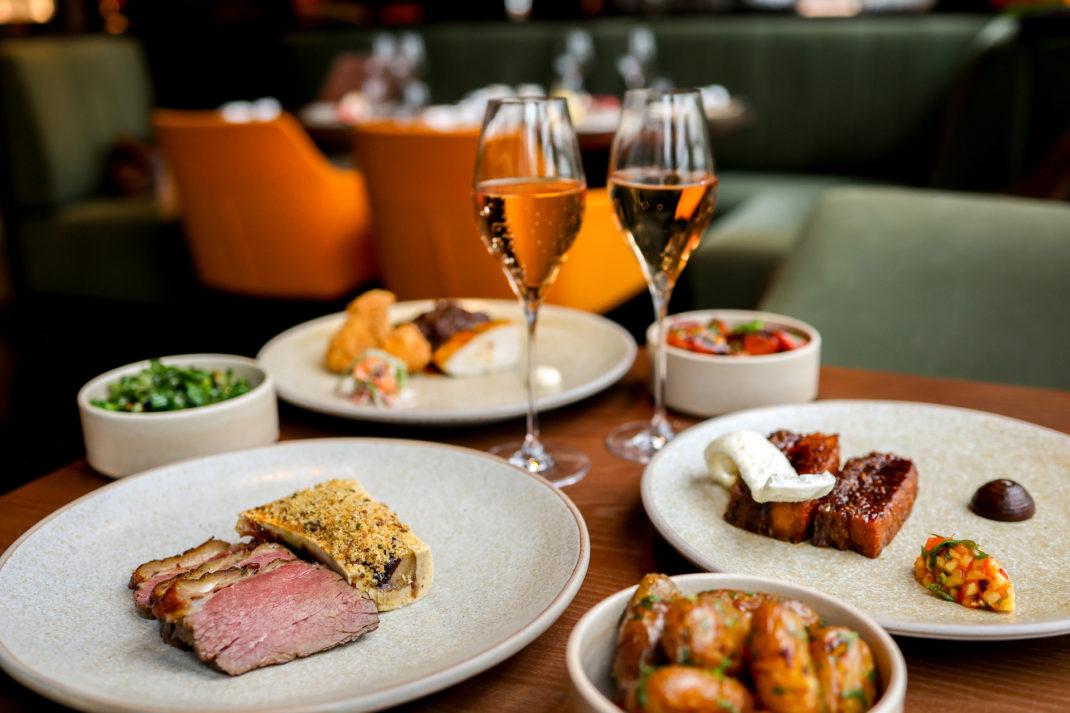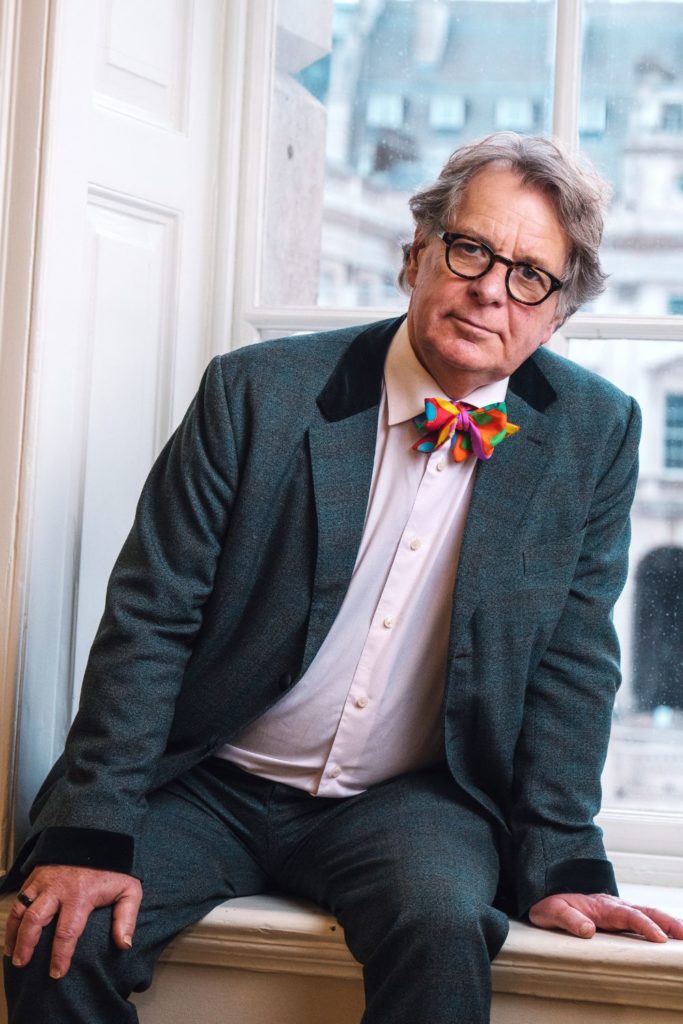Review: Fabergé in London, Romance to Revolution at the V&A
By
3 years ago
A glittering exhibition in the heart of the city
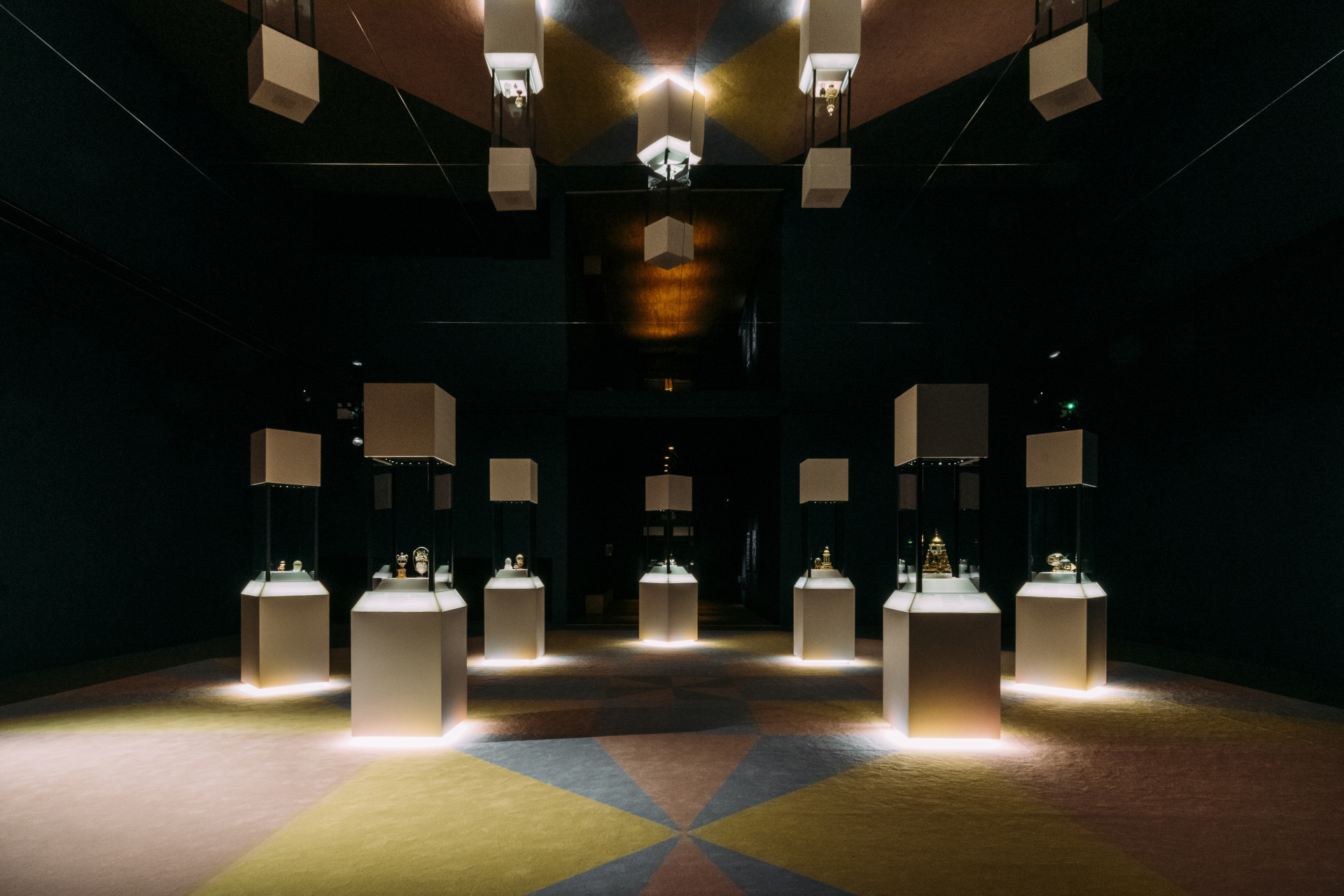
In its latest exhibition, the V&A invites visitors to enter the world of Fabergé, the legendary Russian jewellery firm whose legacy dates back to 1842. From its beginnings in Russia and relationship with the Romanov family to international acclaim in London and decline in the face of war, Fabergé in London, Romance to Revolution is an in-depth exploration of the firm’s legacy in Britain and beyond.
Review: Fabergé in London, Romance to Revolution at the V&A
Fabergé has enjoyed international success as a pioneer of decorative and jewellery-based arts since its conception in the mid-nineteenth century. Headed by goldsmith Carl Fabergé, the workshop went on to produce intricately designed gifts and trinkets that wowed clients from all over the world – including our very own royal family.
Fabergé in London, Romance to Revolution uses over 200 objects to reflect on the legacy of the jewellery firm, taking a deep dive into its history and how exactly it became synonymous with Russian craftsmanship, elegance and opulence. As the first Fabergé exhibition in the UK since 1994, it also places particular emphasis on the little-known Fabergé London branch, which became a fashionable hotspot for Edwardian high society.
The exhibition’s curators, Kieran McCarthy and Hanne Faurby, worked closely together over four years to bring Fabergé in London, Romance to Revolution to fruition, creating ‘a joyous study of whimsy, wonder and beauty’.
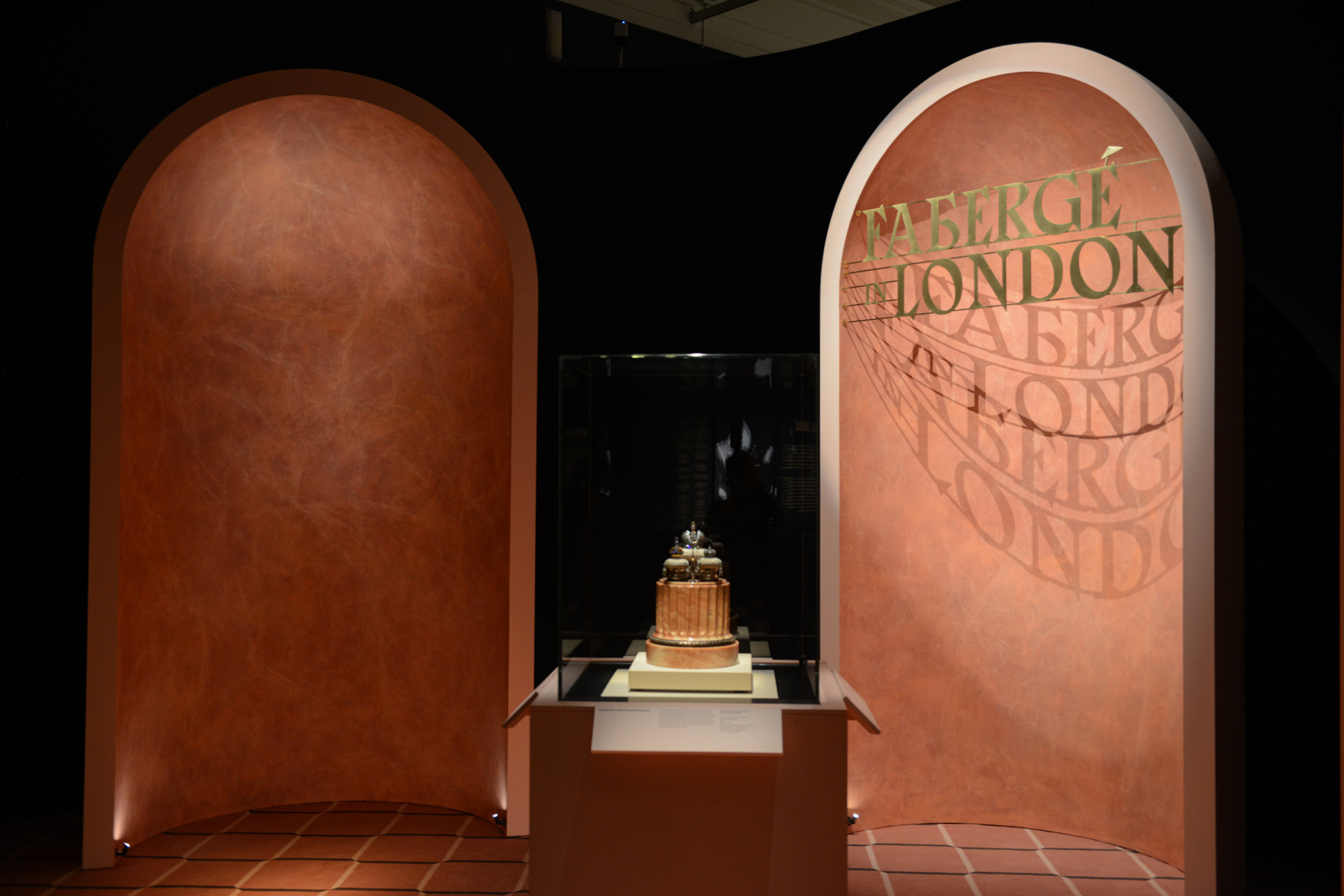
Installation shot of Faberge in London, Romance to Revolution at the V&A, from November 20 to May 8 (c) Victoria & Albert Museum
Visitors to the exhibition are led on a journey through Carl Fabergé’s career, as well as the romances and relationships that inspired many of the works of art he created.
Beginning with an exploration of Carl’s early years and rise to fame in Russia, the exhibition highlights the patronage of the Romanovs. The Russian Imperial family were known for giving each other beautiful and intimate Fabergé gifts, many of which are scattered throughout the first gallery. From bespoke trinket boxes, lovingly inscribed prayer books and small sculptures to crystal flowers and family portrait miniatures, Fabergé in London, Romance to Revolution outlines from the very start the love language that these objects represented.
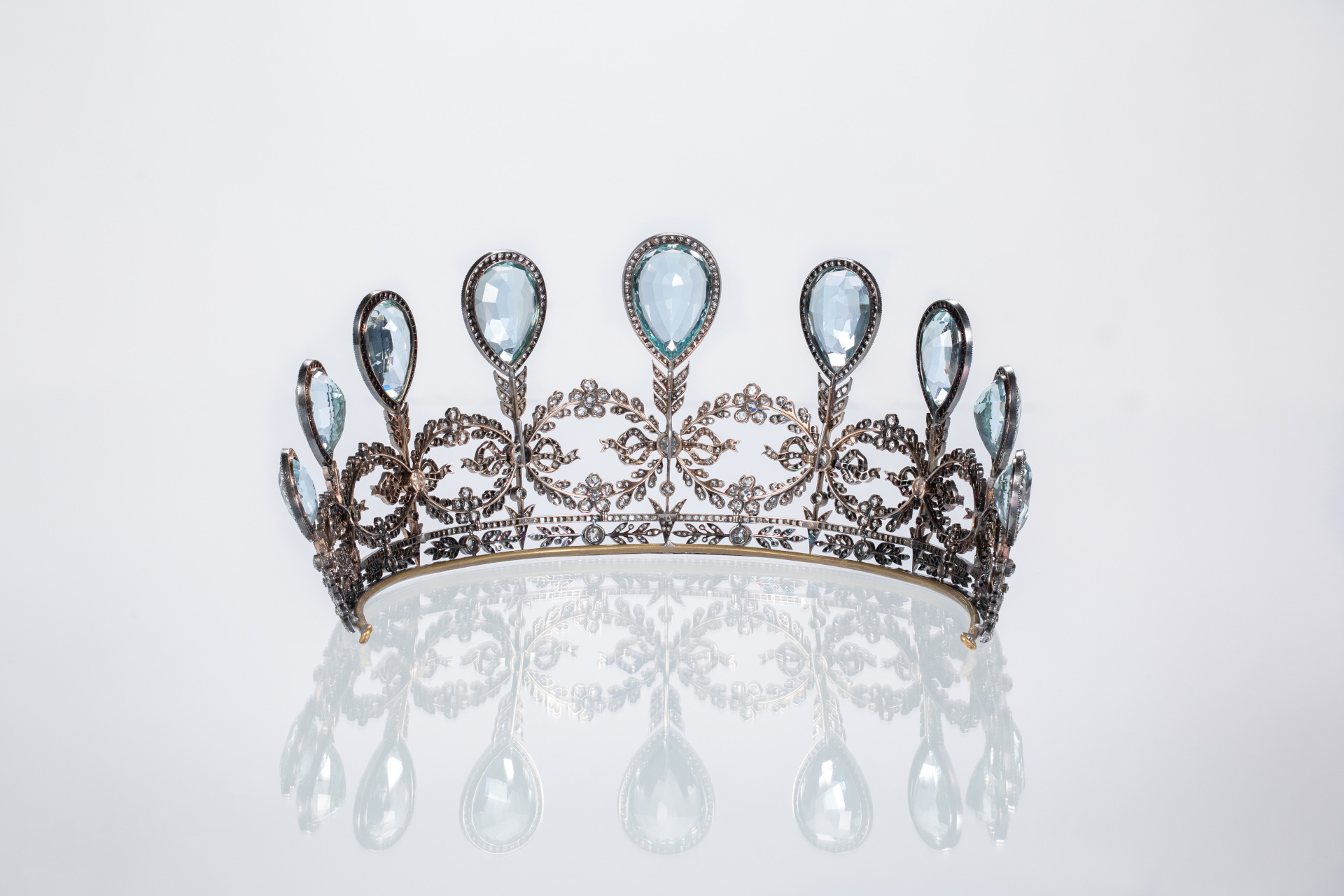
Aquamarine and diamond tiara by Fabergé, aquamarine, diamond, silver, gold. Workmaster Albert Holmstrom, St. Peterburg, circa 1904. Photography courtesy of HMNS. Photographer Mike Rathke
The exhibition then moves on to Fabergé’s successes outside of Carl’s home country. The London branch of Fabergé (and the only branch outside of Russia) is highlighted as the epicentre of Fabergé’s international movements. Located on Bond Street, the shop flourished under the patronage of the British royals, who were already avid Fabergé collectors as a result of the many gifts sent to them by Emperor Nicholas II and Empress Alexandra Feodorovna.
Amongst the more flamboyant displays of gifting in the gallery rooms, visitors can see hardstone portraits of the farm animals King Edward and Queen Alexandra bred at Sandringham – showcasing the close relationship between Fabergé and the royals.
In the penultimate room, however, the exhibition shows the impact of the First World War on Carl Fabergé’s workshops. The war led to the dissolution of Fabergé’s London shop and the conscription of Carl’s beloved workshop in Russia, which produced munitions throughout the years of war effort. The Romanovs, who had been overthrown by the Proletariat, were no longer able to provide patronage. Glittering jewels and precious metals were traded in for copper and brass, exemplified by the switch from decoration eggs to hand grenades. In one corner of the room, a film plays footage and photographs show a war-ravaged Russia.
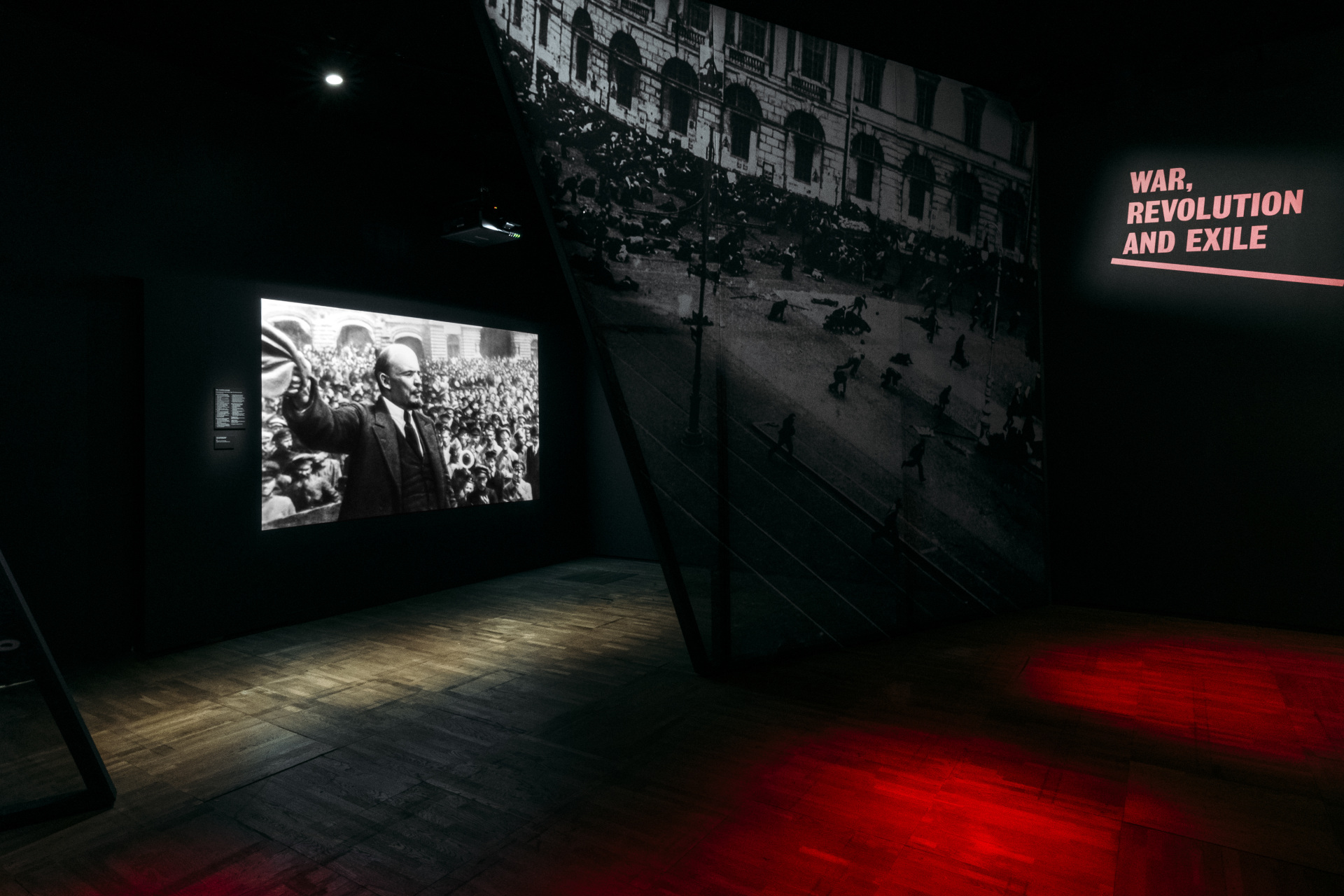
Installation shot of Faberge in London, Romance to Revolution at the V&A, from November 20 to May 8 (c) Victoria & Albert Museum
But while the story-telling may come to a close here, Fabergé in London, Romance to Revolution by no means suggests that the workshop’s legacy simply ends.
The finale of the exhibition comes in the form of the largest collection of Imperial Easter Eggs in a generation, many of which have never been exhibited before in the UK. 15 Easter Eggs are showcased on platforms dotted throughout a mirrored room, serving as a dramatic last word that Fabergé continues to live on as a shining example of Russian craftsmanship and history.
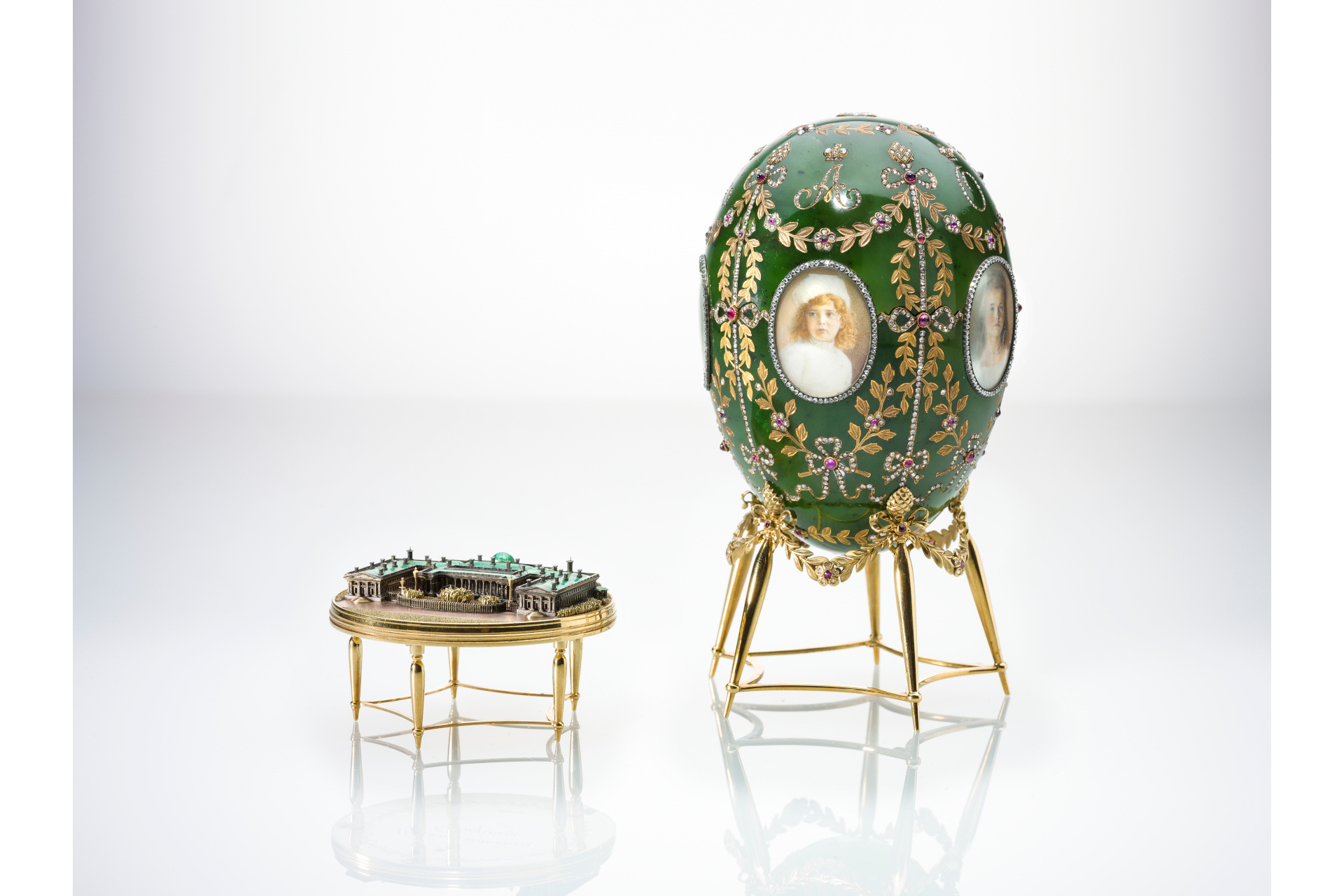
The Alexander Palace Egg, Fabergé. Chief Workmaster Henrik Wigström (1862-1923), gold, silver, enamel, diamonds, rubies, nephrite, rock crystal, glass, wood , velvet, bone, 1908 © The Moscow Kremlin Museums
Highlights include the Moscow Kremlin Egg, on loan from the Museum of Moscow and the largest egg in the exhibition, the Diamond Trellis Egg, a gift given by Emperor Alexander III to his wife for Easter 1892, and the Alexander Palace Egg, which contains a miniature table topped with an enamelled gold and silver model of the Alexander Palace.
The Final Word
Tristram Hunt, Director of the V&A, described the exhibition as ‘a flash of brilliance’ in the UK capital during a time when the darkness of the pandemic still seems so prominent. This sentiment rings true throughout Fabergé in London, Romance to Revolution, which celebrates unwavering creativity and skill in the face of tough times.
BOOK
Fabergé in London, Romance to Revolution will be showing at the V&A from 20 November 2021 to 8 May 2022. Tickets are £18. For more information, please visit vam.ac.uk
Featured image: Installation shot of Faberge in London, Romance to Revolution at the V&A, from November 20 to May 8 (c) Victoria & Albert Museum
MORE REVIEWS
Beano: The Art of Breaking the Rules at Somerset House / Waste Age at the Design Museum

